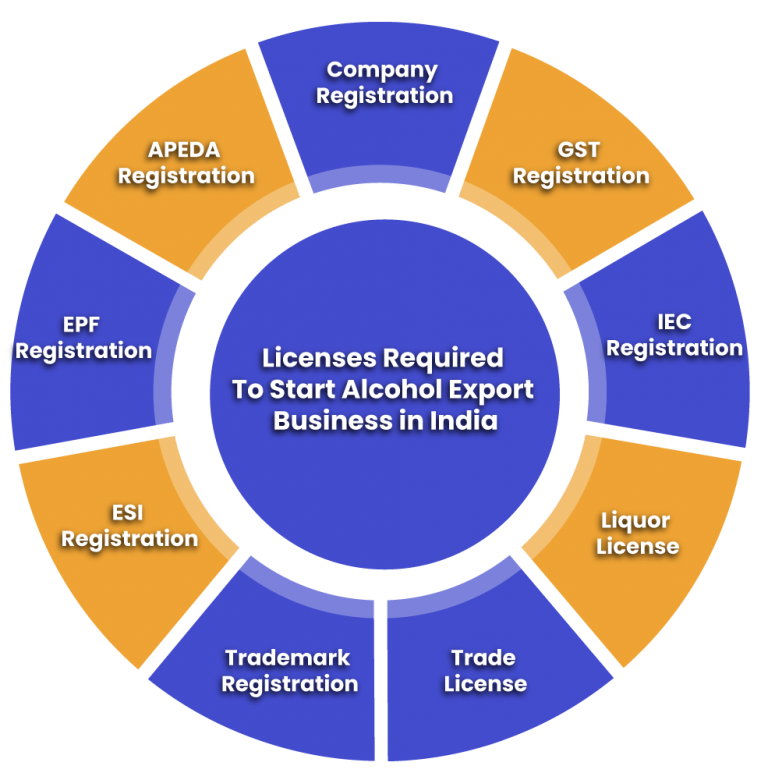In the fiercely competitive world of alcohol, starting a brand that not only thrives but also leaves an indelible mark can be a daunting endeavor. However, with a strategic blueprint and unwavering passion, navigating this intoxicating realm can lead to a rewarding and fulfilling journey. Embarking on this path requires meticulous planning, an understanding of the market landscape, and a keen eye for identifying unique opportunities. In this comprehensive guide, we will delve into the intricacies of how to start an alcohol brand that captivates consumers and leaves a lasting impression.

Image: swaritadvisors.com
Understanding the Alcohol Industry
The global alcohol industry is a vast and complex landscape, encompassing diverse categories such as beer, wine, and spirits. Within each category, a multitude of sub-categories and styles exist, catering to the eclectic preferences of consumers worldwide. Thoroughly understanding this competitive landscape is paramount for any aspiring alcohol brand. This includes researching market trends, identifying gaps, and pinpointing potential opportunities.
Conducting in-depth market analysis is essential for gaining insights into consumer behavior, preferences, and purchasing patterns. By studying market research reports, industry publications, and consumer surveys, you can gain valuable information about target demographics, competition, and emerging trends. With this knowledge, you can tailor your brand strategy and product offerings to align with market demands and differentiate yourself from the competition.
Developing a Compelling Brand Identity
The identity of your alcohol brand serves as its foundation, shaping how consumers perceive and engage with it. Defining a clear brand identity entails identifying your brand’s core values, personality, and unique selling proposition (USP). The USP is what sets your brand apart in the crowded marketplace, offering something distinct and compelling that resonates with target consumers.
Carefully craft a brand story that captivates the imagination and establishes an emotional connection with consumers. This narrative should authentically reflect your brand’s values and resonate with your target audience, fostering a sense of trust and loyalty. Choose a brand name that is memorable, relevant, and aligns with your brand’s personality.
Design a visually distinctive brand logo and packaging that visually communicates your brand’s essence and establishes instant recognition. Consider the overall aesthetics of your brand, including color palettes, fonts, and imagery, ensuring consistency and cohesiveness across all brand touchpoints.
Crafting High-Quality Products
In the fiercely competitive alcohol industry, the quality of your products is of utmost importance. Exceptional taste and meticulous craftsmanship are non-negotiable factors that will determine the success of your brand. Invest heavily in product development, partnering with experienced distillers, winemakers, or brewers to create a portfolio of products that meets the highest standards of quality.
Experiment with unique flavors and innovative production techniques to differentiate your products from the competition. Consider the sourcing of your ingredients, ensuring they are of the finest quality and align with your brand’s values. Rigorous quality control throughout the production process is essential to maintain consistency and ensure that every bottle meets your exacting standards.

Image: thebrandsmen.com
Building a Strong Distribution Network
Establishing a robust distribution network is crucial for ensuring that your alcohol products reach their target consumers. Explore various distribution channels, including wholesalers, retailers, and online platforms, to maximize your brand’s reach and visibility. Develop strategic partnerships with influential distributors who have strong relationships with key retailers and can effectively promote your brand within their networks.
Negotiate favorable distribution terms that align with your brand’s goals and provide fair compensation to your distribution partners. Invest in building strong relationships with distributors, providing them with ongoing support, training, and marketing materials to ensure they are effectively representing your brand. Monitor distribution performance metrics regularly to identify areas for improvement and optimize your distribution strategy.
Effective Marketing and Sales Strategies
Developing a comprehensive marketing and sales strategy is essential for creating awareness of your alcohol brand and driving sales. Utilize a multi-pronged approach that encompasses traditional advertising, digital marketing, public relations, and experiential marketing to engage consumers and build brand loyalty.
Identify the appropriate marketing channels for your target audience, whether it be social media, online advertising, print publications, or industry events. Create compelling marketing campaigns that resonate with consumers emotionally and showcase the unique attributes of your products. Leverage public relations to generate positive media coverage and establish your brand as a thought leader within the industry.
Implement effective sales strategies that align with your distribution channels and target consumer base. Train your sales team to be knowledgeable about your products and equipped to effectively convey their value to potential buyers. Offer incentives and promotions to encourage distributors and retailers to stock and promote your products.
How To Start An Alcohol Brand
Conclusion
Starting an alcohol brand is a multifaceted endeavor that requires a comprehensive approach, unwavering dedication, and a deep understanding of the industry. By following the comprehensive guide outlined in this article, you can increase your chances of success in this competitive market. Remember to conduct thorough market research, develop a compelling brand identity, craft high-quality products, build a strong distribution network, and implement effective marketing